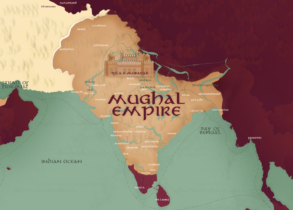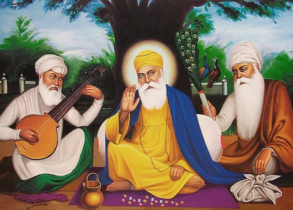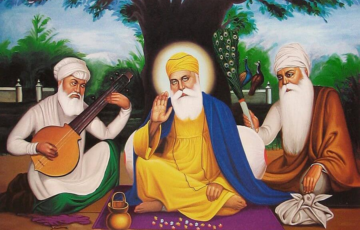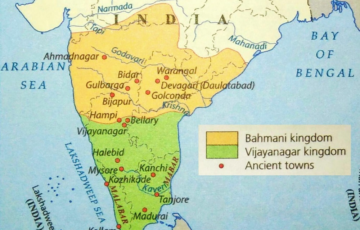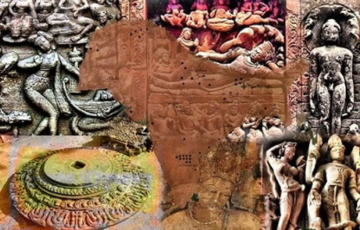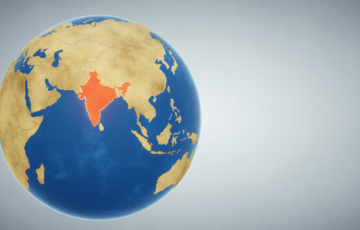THE MARATHAS
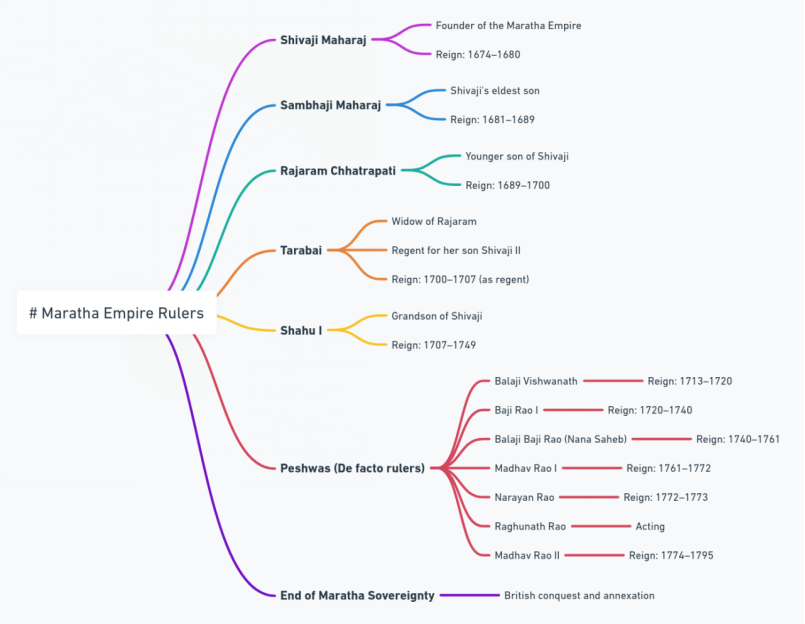
Marathas occupied influential positions within the administrative and military frameworks of the
Deccan Sultanates of Bijapur and Ahmadnagar. However, the establishment of a formidable Maratha state is chiefly credited to Shahji Bhonsle and his son Shivaji. It was Shivaji Maharaj who brought about political cohesion among the Marathas.
Shivaji (1627–1680 AD):
- Shivaji’s Leadership:The Maratha ascendancy commenced in the early 17th century under Shivaji’s leadership. He expanded Maratha territories by carving them out of Bijapur, Ahmednagar, and Golkonda.
- Early Life of Shivaji:
- Born in Shivnerinear Junnar to Shahji Bhonsle and Jijabai.
- Inherited the Poona jagir in 1637 under the guardianship of Dadaji Kondadev.
- Assumed full control of his jagir in 1647 after Dadaji Kondadev’s demise.
- Military Exploits of Shivaji:
- Initiated military campaigns at a young age, capturing forts like Raigarh, Kondana, and Torana between 1645-47.
- Seized the strategically important Purandhar fort in 1646, establishing a formidable defense for the Marathas.
- Maratha-Mughal Relations:
- First Phase (1615-1664):Mughals recognized Maratha chieftains’ significance but failed to align with them after Shahji’s defection.
- Second Phase (1664-1667): Aurangzeb appointed Jai Singh as the viceroy of Deccan, resulting in the Treaty of Purandhar (1665).
- Third Phase (1667-1680):Shivaji, angered by Mughal actions, launched attacks to reclaim lost forts, culminating in his coronation as Chhatrapati in 1674.
- Key Battles and Achievements:
- Battle of Pratapgarh (1659):Shivaji defeated Afzal Khan, the Bijapur general.
- Battle of Sinhagadh (Kondhana, 1670):Shivaji’s forces triumphed, though Tanhaji, his aide, perished.
- Battle of Salher (1672):Marathas, employing guerrilla tactics, emerged victorious against the Mughals on an open battlefield.
- Coronation of Shivaji:He crowned himself king in 1674 at Raigarh, assuming the title of Chhatrapati.
- Legacy of Shivaji:Shivaji’s demise in 1680 marked the establishment of a robust empire that dominated Deccan and North India for over a century.
| Treaty of Purandar:
● The Treaty of Purandar, signed in 1665, delineated the terms between Shivaji and the Mughal Empire, aiming to stabilize the tumultuous relations between the two powers. ● Forts Surrendered: Shivaji agreed to surrender 23 forts to the Mughals as part of the agreement, thereby relinquishing control over strategic strongholds in the region. ● Mughal Mansabdar: He was obligated to serve as a Mansabdar in the Mughal military hierarchy and join forces with the Mughals in their campaigns against Bijapur, aligning his military capabilities with those of the empire. ● Recognition of Territories: The Mughals formally acknowledged Shivaji’s authority over certain territories previously held by the Bijapur kingdom, granting him a degree of autonomy in these regions. ● Exemption for Shivaji: Despite the terms of the treaty, Shivaji was exempted from personally serving the Mughals. Instead, his minor son Sambhaji was granted a Mansab of 5000 zat, symbolizing the continuation of Shivaji’s legacy within the Mughal administrative structure. |
Maratha’s Administration:
Ministerial Responsibilities:
- All ministers, except Nyayadhish and Pandit Rao, led military expeditions and commanded armies.
- Royal decrees required approval and seals from the King and the Peshwa, along with endorsements from four other key ministers.
- There were eighteen administrative departments, each overseen by different ministers.
- Control Over Landed Families:
- Shivaji expanded crown land to control influential Maratha landed families, known as Deshmukhs.
- Adnyapatra, written in Modi scriptby Ramchandra Pant Amatya, outlined the principles of Maratha policy and state administration.
Provincial Government:
- The kingdom (Swaraj) was divided into Mauzas, Tarafs, and Prants.
- Prants were governed by a subedar, known as a karkun or mukhya desbadhikari.
- Tarfs were led by a havaldar, known as a karkunoa paripatyagar.
- Mauza was the smallest administrative unit.
Revenue Administration:
- The revenue system was based on Malik Amber’s Kathi system, where land was measured by Rod or Kathi.
- Shivaji’s revenue system was farmer-friendly, with a fixed state demand initially set at 30%, later increased to 40%of the gross produce.
- During famines, the government provided repayable aid and advanced loans to peasants.
Chauth and Sardeshmukhi:
- Shivaji collected Chauth (one-fourth of revenue) and Sardeshmukhi (additional 10%) from conquered territories and neighboring lands.
Military Organization:
- The Marathas excelled in guerrilla warfareand utilized innovative weapons like the Bagh naka (tiger claw).
- Infantry consisted of highly mobile Mavli(foot soldiers) and part-time peasant soldiers.
- The cavalry included Bargirs (state-provided horses) and Shiledars (mercenary horsemen).
Judicial System:
- Justice was administered through informal Panchayats in villages, guided by ordeals and smritis.
- Nyayadhish heard appeals in both civil and criminal cases, while Hazir Majlim served as the final court of appeal.
Asthpradhan
| Peshwa (Mukhya Pradhan) | Finance & general administration. Later became prime minister |
| Senapati (Sar-i-Naubat) | Military commander |
| Majumdar (Amatya) | Accountant General |
| Waqenavis (Mantri) | Intelligence, posts and household affairs |
| Sachiv (Surnavis) | Correspondence |
| Dabir (Sumant) | Foreign minister & Master of ceremonies. |
| Nyayadhish | Justice |
| Panditrao (Sadar) | High Priest, managing internal religious matters
|
SAMBAJI’S REIGN(1680-1689)
- Sambhaji, the son of Shivaji Maharaj, held the position of a Mansabdar in the Mughal Empire as per the Treaty of Purandar.
- His reign was characterized by continuous conflicts with the Mughal Empire, as well as with neighboring powers such as the Siddis, Mysore, and the Portuguese in Goa.
- In 1687, Sambhaji achieved a significant victory over the Mughal forces at the Battle of Wai.
- However, in 1689, Sambhaji was captured, subjected to torture, and eventually executed by the Mughals.
- Following his demise, his brother Rajaram I succeeded him as the ruler.
SHAHU (1707-1749): PESHWA ASCENDANCY AND MARATHA EMPIRE’S SHIFTING DYNAMICS (1707-1749)
- Shahu’s reign marked the ascendancy of the Peshwas, reducing the Bhosales to mere figureheads.
- By the time of Rajaram II/Ram raja, the authority of the Chhatrapati was largely overshadowed by that of the Peshwa.
RULE OF THE PESHWAS (1713-1818 AD)
| KINGDOMS | TERRITORY |
| Scindia | Gwalior |
| Holkar | Indore |
| Pawar | Dhar |
| Gaekwad | Baroda |
| Bhosale | Nagpur |
| Peshwa | Poona |
Balaji Vishwanath (1713-1720)
- Balaji Vishwanath Bhat (1662–1720) was the inaugural hereditary Peshwa from the Bhat family, who rose to prominence in the 18th century, marking the beginning of a lineage.
- Initially serving as a minor revenue official, he ascended to the esteemed position of Peshwa in 1713.
- Balaji Vishwanath solidified the authority and hereditary nature of the Peshwa position, becoming a pivotal figure in the Maratha Empire’s power structure.
- He played a crucial role in the Maratha civil war, ultimately establishing Shahu as the ruler and garnering support from various Maratha leaders.
- His diplomatic endeavors secured recognition from the Mughal emperor, Farukh Siyar, in 1719, granting Shahu the status of Maratha king and rights to collect taxes from Mughal Deccan provinces.
Baji Rao I (1720-1740)
- Baji Rao I, the eldest son of Balaji Vishwanath, assumed the mantle of Peshwa at the age of twenty following his father’s tenure.
- He ushered in an era of Maratha supremacy, establishing a confederacy system among Maratha chiefs, granting them autonomous territories.
- Baji Rao I’s governance facilitated the rise of influential Maratha families like the Gaekwads, Bhonsles, Holkars, Scindias, and Peshwas, spreading their authority across India.
Balaji Baji Rao (1740-1761)
- Balaji Baji Rao, also known asNanasaheb Peshwa, succeeded Baji Rao I and was known for his prowess in war, diplomacy, and administration.
- He implemented significant reforms in Pune’s civil administration, focusing on agricultural reorganization and law enforcement.
- Nanasaheb’s policies faced challenges, notably the destruction of the Maratha navy and the alliance with the British East India Company, leading to repercussions like the Battle of Panipat in 1761.
- Despite victories against the Nizam of Hyderabad and other adversaries, the Battle of Panipat marked a turning point, causing significant losses and the eventual decline of Maratha power.
Peshwa Madhav Rao I (1761-1772) and his Successors
- Madhav Rao I, succeeding Nanasaheb, endeavored to regain Maratha influence lost after the Battle of Panipat.
- He engaged in conflicts against the Nizam of Hyderabad and Haider Ali of Mysore, reclaiming lost territories and asserting Maratha dominance in northern India.
- Madhav Rao I’s efforts included diplomatic maneuvers such as returning the Mughal Emperor Shah Alam II to Delhi, consolidating Maratha influence.
- His death in 1772 marked the end of a remarkable era, leading to succession challenges and eventual decline, culminating in the reign of the last Peshwa, Baji Rao II.
| Battle of Panipat | |
| ● Ahmad Shah Abdali solidified his position in India through military campaigns against the Mughals, seizing control of Multan, Punjab, and Delhi by 1757.
● An expedition led by Malhar Rao Holkar and Raghunatha Rao successfully removed Abdali’s agent at Delhi and captured Sirhind and Lahore in 1758. Course of War: ● Abdali returned to India in October 1759 to reclaim the Punjab, countering the Maratha expansion. ● The Peshwa dispatched Dattaji Scindia to the Punjab, but suffered defeat in the battle in 1760. Malhar Rao Holkar was also defeated at Sikandara. ● The Peshwa assembled a vast army under Sadasiva Rao, joined by forces led by Holkar, Scindia, and Gaikwar. ● Abdali formed alliances with Najib-ud-Daulah of Rohilkhand and Shuja-ud-Daulah of Oudh. ● Despite attempts, the Marathas failed to secure allies among northern powers, having alienated figures like the Nawab of Oudh, Sikh chiefs, Jat chiefs, and Rajputs. Effects of the Battle of Panipat: ● The Marathas suffered a severe defeat, resulting in casualties including Viswas Rao, Sadasiva Rao, and the death of the Peshwa in 1761. ● Post-battle, contingents led by Holkar and Scindia retreated. ● Despite initial setbacks, the Marathas regained northern power within a decade, eventually supporting Mughal Emperor Shah Alam. |
|
| The Anglo-Maratha Wars: | |
| First Anglo-Maratha War (1775-1782):
Dispute over the succession to the Peshwaship led to Raghunath Rao’s bid for power, opposed by Nana Fadnavis of Pune. Raghunath Rao sought British support, leading to territorial concessions in return. The 1782 Treaty of Salbai ensured peace for approximately two decades. |
|
| Second Anglo-Maratha War (1803-1806):
Following Nana Fadnavis’ death, Peshwa Baji Rao II allied with the British, sparking the war due to the humiliating Treaty of Bassein. Despite fierce resistance, the Marathas were defeated, conceding territories and accepting the British terms of the Subsidiary Alliance. |
|
| Third Anglo-Maratha War (1817-1819):
Escapes and conspiracies within the Maratha confederacy increased tensions, leading to coercion of the Peshwa into a new treaty in 1817. The Peshwa attacked the British Residency in Poona, but subsequent defeats in battles forced Baji Rao II to surrender in 1818. |
|
| Key Wars and Conflicts of Maratha Empire
● Battle of Pratapgarh (1659): This marked the rise of Maratha power under Shivaji Maharaj’s leadership, where he defeated the Bijapur Sultanate’s general, Afzal Khan. This victory was significant for establishing Maratha dominance in the region. ● Battle of Pavan Khind (1660): A rear-guard battle led by Baji Prabhu Deshpande, enabling Shivaji Maharaj’s escape from Panhala fort. Despite being heavily outnumbered, the Marathas displayed extraordinary bravery. ● Siege of Purandar (1665): Faced with a massive Mughal army led by Mirza Raja Jai Singh I, Shivaji Maharaj was forced into the Treaty of Purandar, ceding many forts but keeping the core of his territory intact. ● Battle of Sinhagad (1670): Tanaji Malusare, a general of Shivaji, recaptured the fort of Sinhagad in a night assault, symbolizing Maratha guerilla warfare’s effectiveness. ● Battles of Palkhed, Bhopal, and Vasai (1720s-1730s): Under the leadership of Baji Rao I, the Marathas expanded aggressively into northern and central India, showcasing their military prowess and strategic mobility. |
Maratha Administration Under Peshwas (1714-1818 AD)
Peshwa’s Rise to Prominence
- Initially part of Shivaji’s Ashta Pradhan (council of ministers), not hereditary initially.
- Balaji Vishwanath (1713-1720) made the Peshwa position supreme and hereditary, taking over administration post-Shambhaji.
The Central Secretariat
- Located in Poona, managed revenues, expenditures, and accounts from villages and districts.
- Maintained daily records of all financial transactions including foreign territories.
- Handled salaries for public servants under civil, military, and religious budgets.
Provinces
- Governed by Sar-Subahdars; divided into Subahs and Pranths.
- Mamlatdar and Kamavistaracted as Peshwa’s district representatives, overseeing administration.
- Deshmukh and Deshpandesensured checks and balances, handling accounts and legal/police authority respectively.
- Heavy sums (Rasad)collected from officials upon district appointment to prevent misappropriation.
Revenue Sources
- Primary income from land revenue, transitioning from agricultural produce sharing to tax farming.
- Land assessed based on crop type, irrigation facilities, and productivity.
Village Administration
- Villages led by Patel, a hereditary and unpaid chief officer, assisted by Kulkarni (accountant).
- Village self-sufficient, with hereditary servants and artisans providing labor (begar).
Urban Administration
- Kotwal served as chief officer and magistrate in towns and cities, maintaining order and regulating markets.
- Monthly accounts sent to government, with civil dispute resolution.
Police System
- Village watchmen typically from the Mahar caste.
- Additional house tax in disturbed areas to fund irregular infantry forces for crime control.
Judicial System
- Based on arbitration, lacking codified laws. Unresolved cases moved to panchayats.
- Appeals made to Mamlatdar, with a hierarchy for criminal cases ending with Raja Chhatrapati.
Military Structure
- Army resembled Mughal system, recruiting across India, including Arabs and Sikhs, differing from Shivaji’s local Maratha recruitment.
- Cavalry was the force’s backbone, with Jamindars required to supply horsemen annually.
- Infantry included Arabs, Rohillas, Sikhs, and Sindhis, paid more than Maratha Artillery manned by Portuguese, Indian Christians, and later, English.
- Navy protected ports, fought piracy, and collected customs, with naval bases established by Balaji Vishwanath at Konkan, Khanderi, and Vijayadurg.
Downfall of the Maratha Empire:
- Third Anglo-Maratha War:Culminated in the complete defeat and surrender of Maratha powers to the British, marking the end of the Maratha Empire.
- Peshwa’s Captivity:The last Peshwa was captured and detained in a small estate at Bithur, near Kanpur, effectively ending his political influence.
- Maharaja of Satara:Initially restored as the ruler of his territory under British suzerainty, only to have most of his lands annexed into the Bombay Presidency.
- Initial Annexation: The gradual annexation of Maratha territories into British India, stripping the Maratha leaders of their power and integrating their domains into British administrative units.
- Doctrine of Lapse (1848):Further annexation of Maratha territories, including the princely state of Satara, under Lord Dalhousie’s policy, which targeted states without a direct male heir.
| Important facts
● Battle where Shivaji defeated the Mughals: Salher battle in 1672 AD. ● Shivaji’s birth and assumption of the title of Chhatrapati: Born in 1627 in Shivner Fort, assumed the title of Chhatrapati in 1674. ● Commander sent by Sultan of Bijapur to suppress Shivaji in 1659: Afzal Khan. ● City where Shivaji was held captive before escaping from Mughals: Agra. ● Capital of Shivaji: Raigarh. ● Shivaji’s Guru: Samarth Ramdas. ● Establisher of Ashta Pradhan: Shivaji. ● Post in Maratha administration related to military affairs: Sarnobat. ● Historian witness to the Third Battle of Panipat: Kashiraj Pandit. ● Script used in Maratha documents: Modi script. |
UPSC PREVIOUS YEAR QUESTIONS
1. The third battle of Panipat was fought in 1761. Why were so many empire-shaking battles fought at Panipat? (2014)


